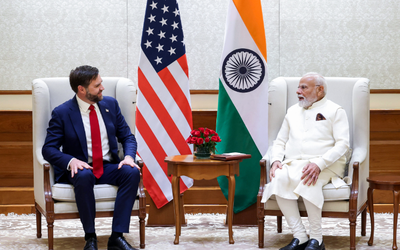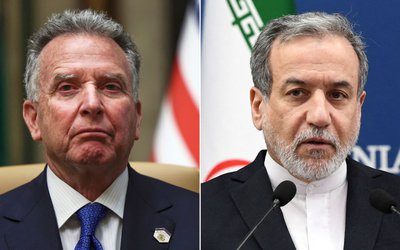
At a time when India is confronted with growing negative sentiments in Nepal, China has been reaping a good harvest of positive perceptions. Despite the delay in signing the oil trade agreement and slow progress in reopening the existing Nepal-China trading routes, there has been a phenomenal improvement of Chinese influence and popularity in Nepal over the last few months.
While Indian projects have witnessed attacks by radical Maoist groups and local people due to the perceived blockade from the Indian side, Chinese companies are being allotted new infrastructure projects.
Economic heft
On December 17, 2015, the Nepalese government allotted Chinese CAMC Engineering Company, a subsidiary of China National Machinery Industry Corporation (SINOMACH), to carry out a feasibility study for construction of the Kathmandu-Pokhara electric railway. This project could be part of the trans-Himalayan railway, envisioned by China, to connect Kathmandu.
China is also building a regional international airport in Pokhara. This is the second biggest infrastructure project undertaken by China in Nepal. Moreover, over a dozen hotels in Pokhara have Chinese owners. Chinese telecommunications major Zhong Xing Telecommunication Equipment (ZTE) has four data centres: in Biratnagar, Kathmandu, Hetauda and Pokhara.
Media reports also indicate that 15 Nepalese districts bordering China have received special concessions on grazing land and humanitarian and developmental aid of RMB 10 million ($1.6 million) annually from 2014 to 2018 from Beijing. The Chinese language is also getting more popular in Nepal. Chinese universities are increasingly becoming the preferred destination for Nepalese students.
Other than soft power, China has used its economic diplomacy to project itself as a non-interfering neighbour by welcoming the new constitution of Nepal. It was perceived as a saviour when it agreed to supply 1.3 million litres of petrol to Nepal as grant-in-aid assistance during acute fuel shortages in Nepal due to irregular supplies from the Indian side. China has also agreed to reconstruct the damaged Nepal-China trade routes and open new trading points for easy supply of goods.
China has allowed resumption of Kathmandu-Lasha bus services after 11 years. Moreover, China has been the second largest donor to the ongoing earthquake reconstruction programmes in Nepal. In March 2015, China increased its annual aid assistance from RMB 150 million to RMB 900 million.
Disadvantage India
To boost Nepalese morale further, Chinese Foreign Minister Wang Yi, in a statement, said recently, “China has all along believed that countries irrespective of their size are equal. China and Nepal have always treated each other sincerely and as equals. We hope that the same policy and practices will also be adopted by India.”
Nepal reciprocated the gesture by waiving visa fees for Chinese tourists. There could be three major reasons for the revision of China’s stance vis-à-vis Nepal. First, over a period of time, China has improved its capacity in terms of its technological prowess and economic growth to feel confident to extend support to Nepal across the Himalayas. Second, China wants to use its flexi power as a vision of President Xi Jinping, to disseminate Chinese values and re-establish China’s image at an international level. Third, China did not want to lose this opportunity when it perceived that India’s influence was in decline.
India’s so-called relationship has been based on soft power like history, culture, people-to-people contacts; non-reciprocity in facilities offered by the 1950 treaty. Although India is Nepal’s top economic partner of Nepal in terms of bilateral trade, investments, technical cooperation and annual aid assistance, it has never been treated as a benign power.
Madhesis’ agitation
India-Nepal relations have reached their lowest ebb. India foresaw that the Madhesi agitation could have a spillover effect. On the other hand, there was a strong perception in Nepal that the Madhesi movement intensified especially due to the tacit support it received from India.
The slow movement of cargo from India and the shortage of essential commodities in Nepal due to agitation in the Madhes region has been perceived as an ‘unofficial India imposed blockade’ on Nepal. Some radical Maoist groups have taken advantage of the situation and attacked the Arun III project office, which is being constructed by the Sutluj Jal Vidyut Nigam (SJVN). Media reports also indicated that suspected Maoists attacked the GMR Energy office in Kathmandu and GMR’s Upper Karnali hydropower project in Surkhet district. Earlier, the Cable Operators’ Association of Nepal stopped broadcasting Indian television channels.
The political crisis in Nepal has led to either cancellation or postponement of regular bilateral meetings between India and Nepal on a host of issues. No substantial progress has been made with regard to the 10 MoUs signed during Prime Minister Narendra Modi’s visit to Kathmandu in November 2014. There are reports of an increase in the activities of Pakistan-based terrorists and the circulation of fake Indian currency.
If Nepal gets an oil pipeline from China — the deal could be inked during Xi Jinping’s visit to Kathmandu sometime in 2016 — the contours of politics in the Himalayan border region of India could change. The gains for China will always be disproportionately higher than the losses that India would incur if there is a prolonged crisis in the Madhes region. At the same time, leaving the Madhesis high and dry in the present situation, when there is a perception in Madhes that India might reverse its course to placate the leadership in the hill region, could complicate the Nepalese situation. There is a need, therefore, to engage leaders of all political parties and craft another consensus. This can ensure Nepalese unity and integrity at one level and cement India-Nepal ties on the other.
The writer is an associate fellow at the Institute for Defence Studies and Analyses.
Courtesy: Hindu Business Line















